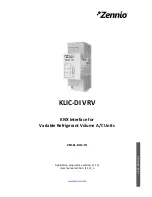
Manual 04121
ProAct I/II
Woodward
19
Power Up Diagnostics
The Power Up Diagnostics feature is provided to verify the proper operation of
the microprocessor and memory components. The diagnostics take about ten
seconds after the control is powered on. A failure of the test will turn off the
output of the control. The ProAct control will not increase actuator signal from
zero until diagnostics are complete.
ProAct Actuator
The ProAct actuator is a limited-angle rotational torque motor designed
specifically for the control of engine fuel. The torque motor is a “run-hold” device.
It responds to a fuel-position error at full speed until the position feedback causes
the electronic control to change the current signal to hold position. This
characteristic makes the actuator extremely fast and at the same time extremely
accurate and “stiff” in engine-fuel control.
The ProAct II uses a four-pole torque motor design to provide 2.7 N·m (2.0 lb-ft)
of torque (3.4 J/2.5 ft-lb work) with 6 A, 24 V input at steady state, and 5.4 N·m
(4.0 lb-ft) of torque (6.8 J/5.0 ft-lb work) with 12 A, 24 V input during transient.
The actuator is equipped with internal stop springs which allow rotational
overshoot of 3° in each direction. The internal spring stops are necessary to halt
the rotation of rotor and load inertia without damage to the actuator. This possible
over-rotation of 3° in both directions must be considered when designing linkage
or connecting to the butterfly shaft.
Figure 2-7. ProAct Output Travel
The terminal shaft on the actuator provides 0.500-36 (inch) serrations. The
output shaft is connected to the butterfly valve or fuel control shaft either directly
through a zero-backlash flexible coupling* or through an attached lever and
linkage. Installations should attempt to use as much of the actuator rotation as
possible to use as much of the actuator's work capability as possible.
*—When a flexible coupling is used, take care to assure that the maximum
coupling misalignment is not exceeded and that the coupling is sized properly
for the loads.
Summary of Contents for ProAct I
Page 10: ...ProAct I II Manual 04121 8 Woodward Figure 1 3 Example of ProAct II Actuator...
Page 11: ...Manual 04121 ProAct I II Woodward 9 Figure 1 4 Outline Drawing of ProAct I or II Actuator...
Page 12: ...ProAct I II Manual 04121 10 Woodward Figure 1 5 ProAct Wiring Diagram...
Page 13: ...Manual 04121 ProAct I II Woodward 11 Figure 1 6 Outline Drawing of ProAct Control Box...
Page 39: ...Manual 04121 ProAct I II Woodward 37 Figure 4 2 Typical Transient Response Curves...
















































